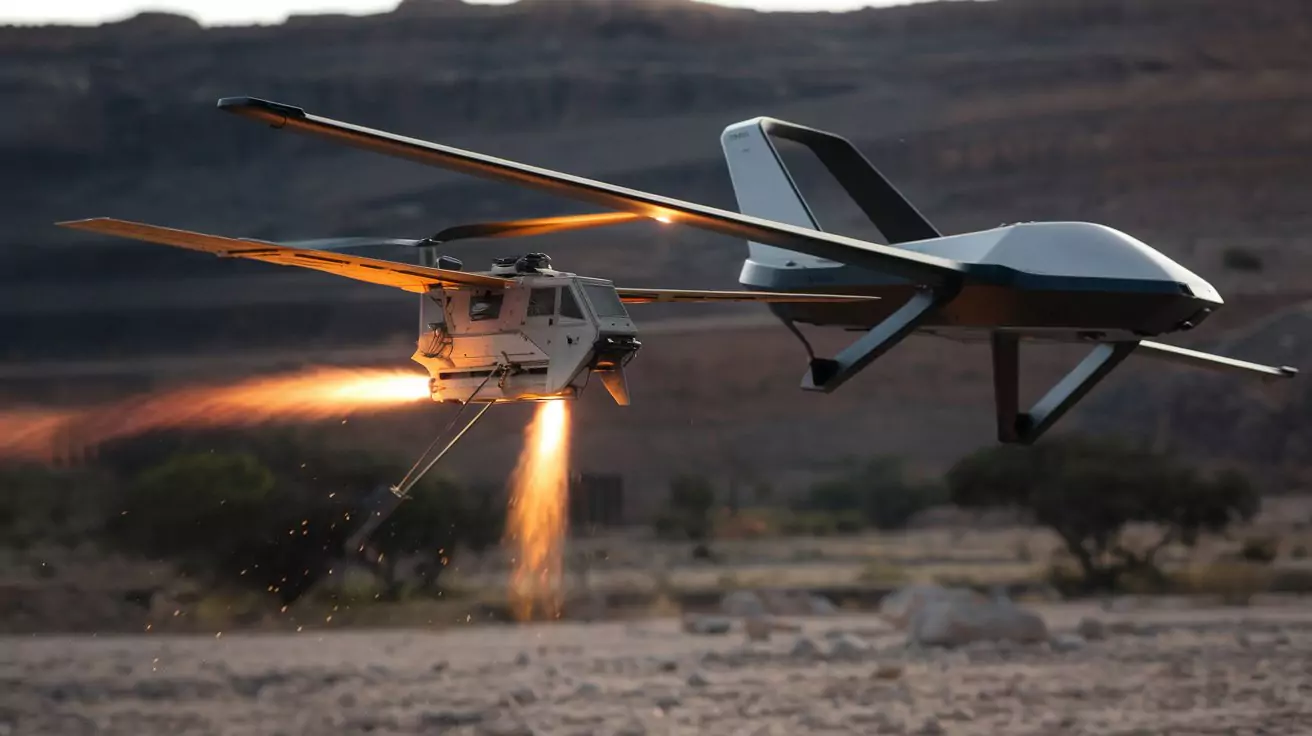AI Impact Analysis on the Military Drone Industry
Artificial intelligence is redefining the capabilities, deployment strategies, and operational doctrines of the military drone industry, transitioning unmanned aerial systems (UAS) from remotely piloted platforms to autonomous, mission-adaptive assets. As defense establishments seek greater speed, precision, and operational flexibility, AI integration has become central to how military drones are designed, managed, and utilized in real-time, contested environments.
At the heart of this transformation is the shift from manual control to AI-driven autonomy. AI enables military drones to navigate complex terrains, recognize targets, and carry out surveillance or strike missions with minimal or no human intervention. This autonomy is especially critical in denied environments where communication with ground stations is limited or compromised. AI-powered drones can independently interpret sensor data, plan routes, detect threats, and dynamically adjust to battlefield changes—all in real time.

Target recognition and situational awareness have seen substantial improvements due to advancements in computer vision and AI-based sensor fusion. Modern military drones are now equipped with machine learning algorithms capable of identifying hostile equipment, personnel, and vehicles under varied visibility and environmental conditions. These capabilities reduce decision latency and improve precision strike potential, minimizing collateral damage while enhancing tactical effectiveness.
Request AI Impact Analysis on Military Drone Industry : https://www.marketsandmarkets.com/pdfdownloadNew.asp?id=221577711
Swarm intelligence is another AI-driven innovation gaining traction in military drone operations. Swarm-based drones, operating in coordinated groups, leverage AI to communicate and collaborate autonomously, allowing for distributed decision-making, adaptive mission reallocation, and collective threat response. This is particularly valuable in reconnaissance, area denial, and saturation attack scenarios, where large numbers of inexpensive drones can overwhelm traditional defenses.
In intelligence, surveillance, and reconnaissance (ISR) missions, AI dramatically accelerates data processing and threat detection. Instead of transmitting vast amounts of raw video or radar feeds to analysts, AI-enabled drones filter, classify, and prioritize information at the edge—allowing command centers to focus on actionable intelligence. This reduces bandwidth usage and speeds up response times, giving warfighters a critical information advantage.
AI also plays a crucial role in enabling contested aerial dominance. Military drones are being trained to counter electronic warfare (EW), spoofing, and jamming by learning and adapting in real time. AI systems can detect attempts to disrupt communications or navigation and autonomously switch to alternate frequencies, modify flight paths, or continue mission execution based on pre-programmed fallback logic.
From a procurement and development standpoint, militaries are increasingly focused on AI-native drone platforms—systems designed from the ground up for autonomous operation rather than retrofitted with smart features. These platforms integrate digital twins, advanced simulation environments, and continuous learning capabilities that allow iterative improvements during deployment cycles. Defense contractors are building drone fleets that not only operate intelligently in the field but also improve themselves over time through operational learning.
Ethical and regulatory frameworks are also evolving in response to AI in military drones. Issues surrounding autonomous lethal decision-making, human-in-the-loop policies, and AI accountability are becoming integral to strategic planning. Defense organizations are seeking to balance operational advantages with compliance to international humanitarian law and rules of engagement, particularly in scenarios involving autonomous targeting or swarming systems.
Geopolitically, the integration of AI in military drones is shifting the global balance of power. Nations investing in AI-enabled UAS are gaining significant advantages in terms of range, persistence, and force projection. Strategic competitors are developing AI-powered drones for both symmetric and asymmetric warfare, prompting a surge in AI-focused defense R&D and international partnerships centered on unmanned systems.
Looking ahead, the military drone industry will continue to evolve toward more integrated, intelligent, and multi-domain systems. AI will serve as the foundational layer enabling interoperability across air, land, sea, and cyber operations. As AI matures, military drones will move beyond ISR and kinetic roles into logistical support, autonomous resupply, electronic warfare, and real-time battlefield coordination.
Ultimately, AI is not just enhancing the military drone industry—it is transforming it into a smart, responsive, and adaptive force multiplier that redefines the dynamics of modern warfare.
Related Report :
GET A FREE SAMPLE
This FREE sample includes market data points, ranging from trend analyses to market estimates & forecasts. See for yourself.
SEND ME A FREE SAMPLE





